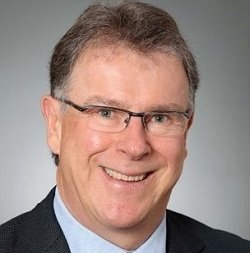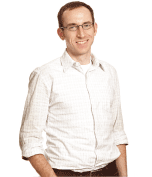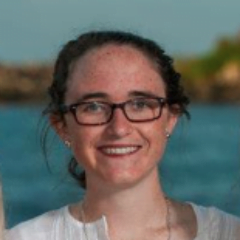Editor’s note: This is the first in the BoringEM Research Week series. We had the wonderful fortune of hearing from some of Canadian Emergency Medicine research heroes. Of course, there are many more Canadian EM researchers than included in this post but thanks to all those who responded! You answered some serious, but mostly fun, questions about various paths in research. The candid answers should be inspiring to prospective, early and seasoned researchers alike! We hope you enjoy this of the nostalgic childhood game “Guess Who? Canadian EM Research Edition”
The 11 Canadian EM researchers who responded to the survey (and who are the answers to the below questions) are:
- Andrew Worster MD, CCFP(EM), MSc(HRM)
- Ian Stiell MD, MSc, FRCPC
- Rob Green BSc, MD, DABEM, FRCPC, FRCP(Edin)
- Carolyn Snider MD, MPH, FRCPC
- Laurie Morrison MD MSc FRCPC
- Russell D. MacDonald MD MPH FCFP FRCPC
- Eddy Lang MDCM CCFP(EM) CSPQ
- Brian H. Rowe MD, MSc, CCFP(EM), FCCP
- Michael Schull MD, MSc, FRCPC
- Andrew McRae MD, PhD, FRCPC
- Christian Vaillancourt MD, MSc, FRCPC, CSPQ
1. Which researcher’s very first project was the Ottawa Ankle Rules?

Dr. Ian Stiell
That’s right! Believe it or not, Ian Stiell’s first research project was the Ottawa Ankle Rules in 1990 as a part of his Master’s thesis- a TSN turning point in emergency medicine practice and research.
Don’t worry, some people are born research heroes but other become them. Your first study doesn’t have to be a blockbuster like Dr. Stiell’s but Andrew Worster suggests that to be successful you must:
“Find something that you’re passionate about. You need to be in love with your project and believe in it when you’re too tired to go on or others are telling you to give up. If you find something that you’re really passionate about, you’ll want to learn everything about it and try to answer the questions that no one else has managed to. Before you know it, you’ll be an expert on the topic.”
2. How many of the researchers think “The Question” is the most important part of the research process?
6/11 (95% CI: 4-7)
3. Which researcher had fun studying the utility of gastric lavage for acetaminophen?
Rob Green enjoyed how hands on this research project was! He also was surprised by how many grad

Dr. Rob Green
students were willing to sign up for the study. Dr. Green reflected that if he could work with any scientist dead or alive he would choose Peter Safar, the grandfather of critical care.
4. Which researcher lived in Malawi for a year?
Michael Schull led a cluster-randomized trial of a healthcare worker training intervention to integrate HIV/AIDs testing, diagnosis and treatment in primary care. He loved travelling to many remote health centers and meeting inspiring health are workers doing their best to help their communities. Now, Dr. Schull uses
Dr. Michael Schull
this same energy and passion to improve care in Canada. Most of his research focuses on health service utilization, quality of care and finding solutions to emergency medicines biggest systems-based issues.
Dr. Schull is not the only Canadian EM research hero tackling systems-based issues. Andrew McRae finds that the most exciting study he has worked on is his current project. He is working to identify the 5 or 6 measures of ED crowding that have strong associations with important patient outcomes and can be measured in real-time in any ED. It’s a project that involves collaboration with a lot of people with lots of smart people! He reports that he is “learning a lot” and is excited about the project’s potential to shape ED crowding policy.
5. Which Canadian EM research hero has a background in neurophysiology?

Dr. Andrew Worster
Andrew Worster is nerdy in the best possible way. During his undergrad years he worked with a neurophysiology professor and “found everything about the process exciting!”. His FIRST Master’s thesis was on neural signal processing. He had to design the experiment and then design and build the recording equipment. He says, “the learning curve was very steep but I felt like a real scientist.” Dr. Worster’s passion for evidence-based medicine explains why, if he had the choice of absolutely anyone, he would choose to collaborate with Archie Cochrane.
6. Which researcher was on the medical team for a Rolling Stones concert?

Dr. Russel MacDonald
Dr. Russell MacDonald helped with contingency planning for the rock concert during the SARS epidemic!!! He evaluated the processes and turned it into several peer-reviewed publications. Read one here. He is a model for making work you are doing “count twice” and this attitude fits with his ideal collaborator Thomas Edison’s sentiment “There are no rules around here- we are trying to accomplish something”. Dr. MacDonald prefers to be involved in operational research because “it examines and impacts entire health care system, not just a small segment of a population within the health care system.”
You too could combine emergency medicine research with something as awesome as rock music.
Passion + Research Skills = ENDLESS POSSIBILITIES
7. Which researcher treated a young man who returned multiple times with intentional injuries as a resident- an experience that lead to a couple of small projects, then a masters degree and an entire clinician-scientist career?

Dr. Carolyn Snider
questioned why she didn’t have the tools yet to counsel this young person who had been injured by violence and found few answers when she tried to find out how she could help. She didn’t like the lack of answers to her questions so she set out to find her own! And find she does. She now uses mixed method research, using large administrative databases, community based participatory research, concept mapping and clinical trial methodologies to design, implement and evaluate interventions to prevent youth violence. See Dr. Snider’s systematic review “Youth violence secondary prevention initiatives in emergency departments” to learn more about an important topic.
Can you think of a case that you have been involved in that has left you with unanswered questions that keep you up at night? It might be a great jumping off point for a research project!
But some have a different path to research. Andrew McRae said he was first became involved:
“The same way as a lot of people–I was a medical student looking to score a residency in Emergency Medicine. I was fortunate enough to have a supportive research supervisor who trusted me with an ambitious project that led to some important publications. It was hard work, but the payoff was enormous.”
8. Which research hero sent us a 31 page CV?

Dr. Christian Vaillancourt
Like all of the Canadian EM research heroes, Dr. Christian Vaillancourt’s CV read less like a list of accomplishments and more like an epic saga of a man who has dedicated his career to bettering a profession and through those efforts affecting the care of a near infinite number of patients. Reading through this humbling document was a reminder to me, a junior researcher, that systematically keeping track of the projects one is involved in real time is easier than trying to create a list in retrospect. Find a system that works for you and keep it up to date.
9. Which researcher thinks the most important part of research is relationship building?

Dr. Laurie Morrison
Dr. Laurie Morrison completed her Master’s thesis on the termination of resuscitation, a project during which she collaborated very closely with paramedics. During this research experience, and throughout her ten years as a clinician-scientist she has found that building strong relationships is what facilitates building and answering questions. Though she values strong relationships, she also stresses that you must “find yourself before working with others” (i.e. know what you have to offer, what your weaknesses are etc.) to optimize research team performance.
10. Which researcher was once fascinated by amylase?

Dr. Eddy Lang
Eddy Lang reflected that cases related to the clinical significance of indeterminate amylase values inspired his work “The prognostic significance of moderate hyperamylasemia in the evaluation of emergency department patients” that was published during his first year on staff. Dr. Lang believes that the most important part of the research process is “curiosity and the drive to contribute beyond clinical medicine and commitment to developing the non-clinical side of your brain”. He knows a great deal about all three of those things!
11. Which hero performed research in Sudbury, Ontario?
You bet, it was Dr. Brian Rowe who is both a “gentleman and a scholar” which is exactly how he

Dr. Brian Rowe
describes Sir Iain Chalmers, the scientist with whom he would most like to work. In the cold tundra of northern Ontario, Dr. Rowe examined the effectiveness of inhaled budesonide + prednisone vs placebo + prednisone. He describes the project as “really hard work but like a marathon, fun when it was over.”….really, a marathon is fun? Really? Anyhow, this project proved to Dr. Rowe that with a good question, dedicated colleagues and committed funders research can be done in non-academic centres.
You should be convinced too! No matter what location you end up in, there are questions to be asked and answers to be found. Take note, high-quality research can be performed anywhere, anytime!
12. Which hero used the term sweat equity to describe a researcher’s contribution to a project?

Dr. Andrew McRae
Dr. Andrew McRae understands that you don’t have the financial equity to fund research but what you lack in $ you can contribute in sweat. He believes, as I am sure many of the other research heroes would, that:
“The best projects are ones that you are passionate about and willing to put a substantial amount of time and sweat equity into–the results will be more meaningful and you’ll learn a lot more.”
He suggests that you “shouldn’t look for small projects that you can have a tiny peripheral role in (there’s no such thing if you don’t want to waste your and your supervisor’s time).”Dr. McRae encourages young researchers to find or create a project that they can make their own and learn from as it progresses.
13. What was the most common tip from the Canadian EM Research heroes for juniors looking to get involved in research?
It was a close tie between “finding something you are passionate about” and “finding a good mentor”. I guess that the two are probably related. A practical tip from Dr. Lang, is to read the David Sackett article “On the determinants of academic success as a clinician scientist“. This seems a very wise suggestion, and a great place to start!

